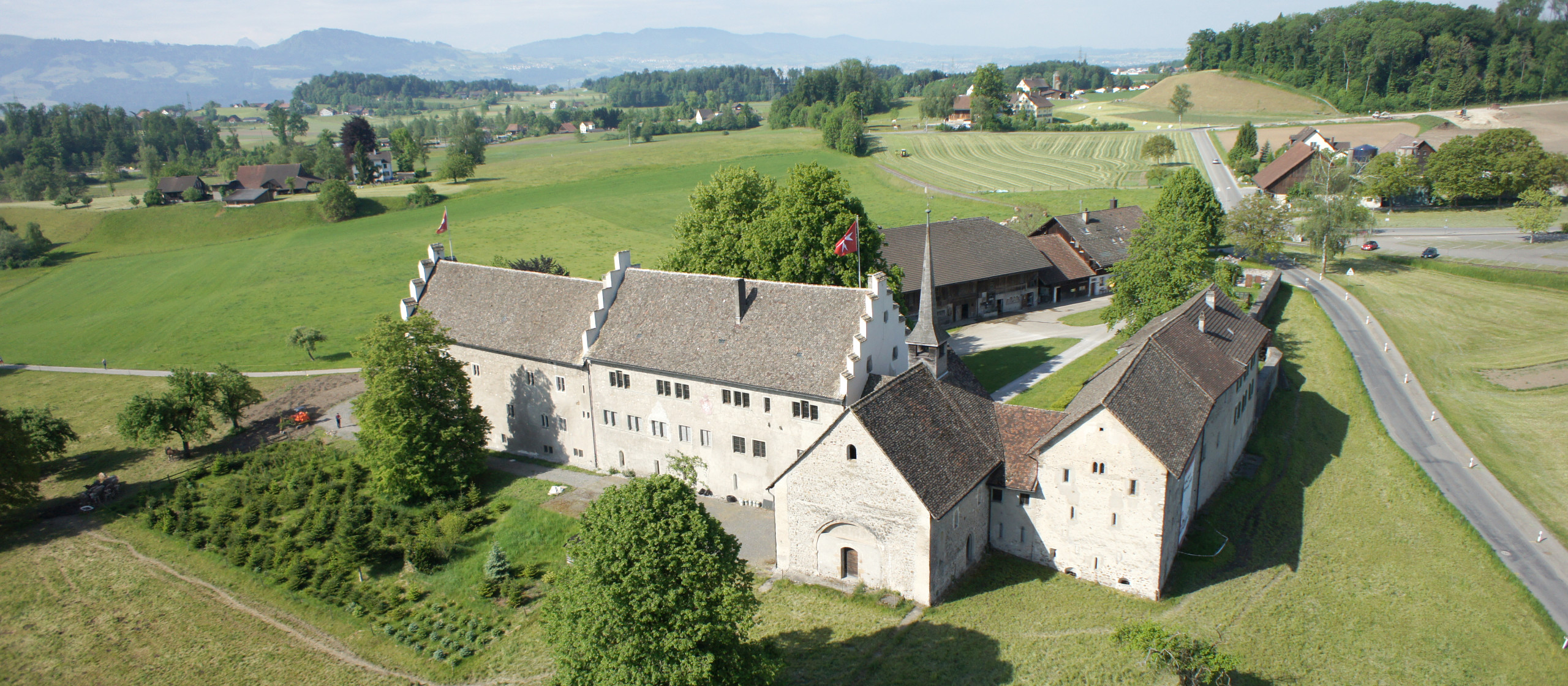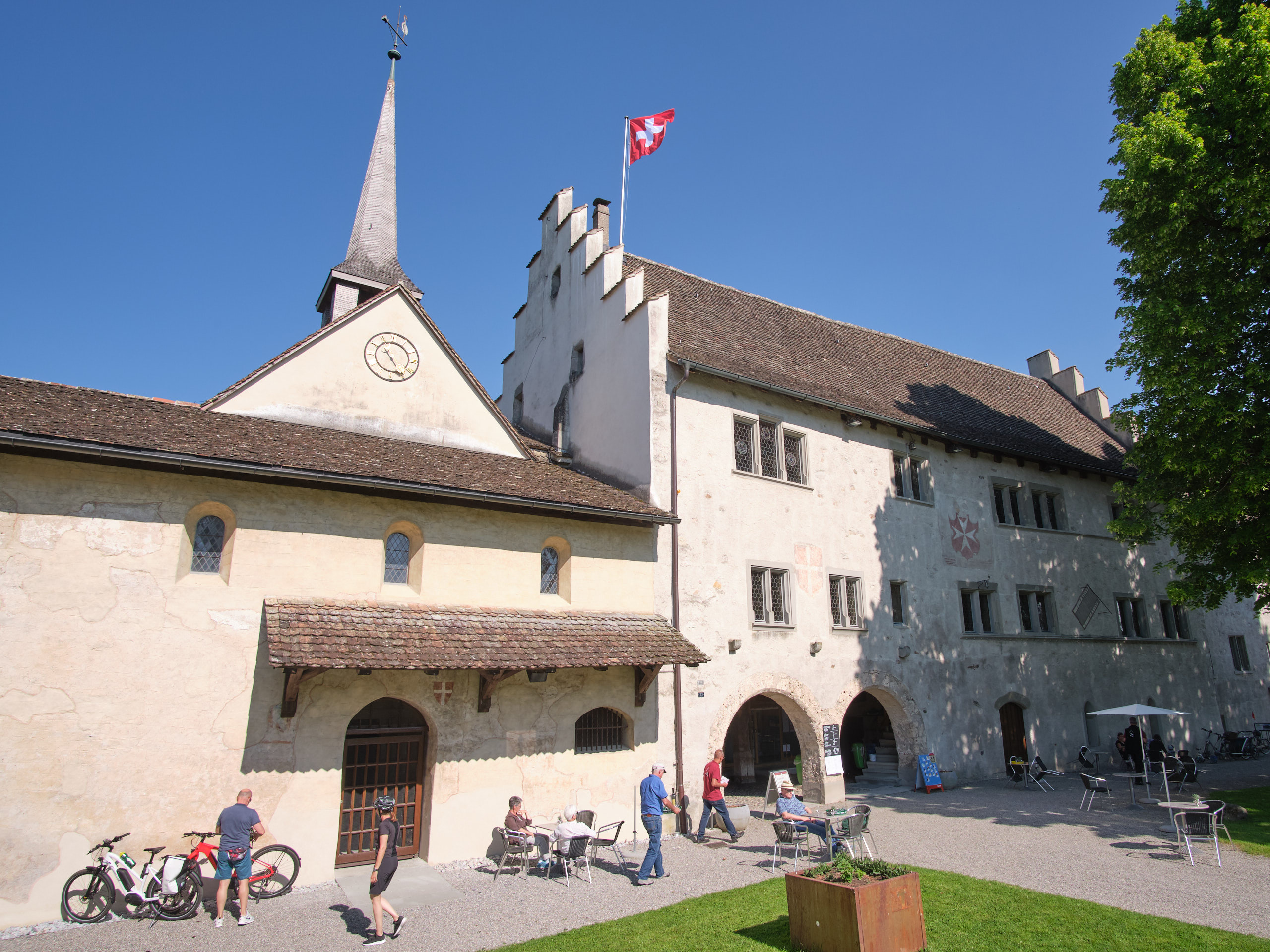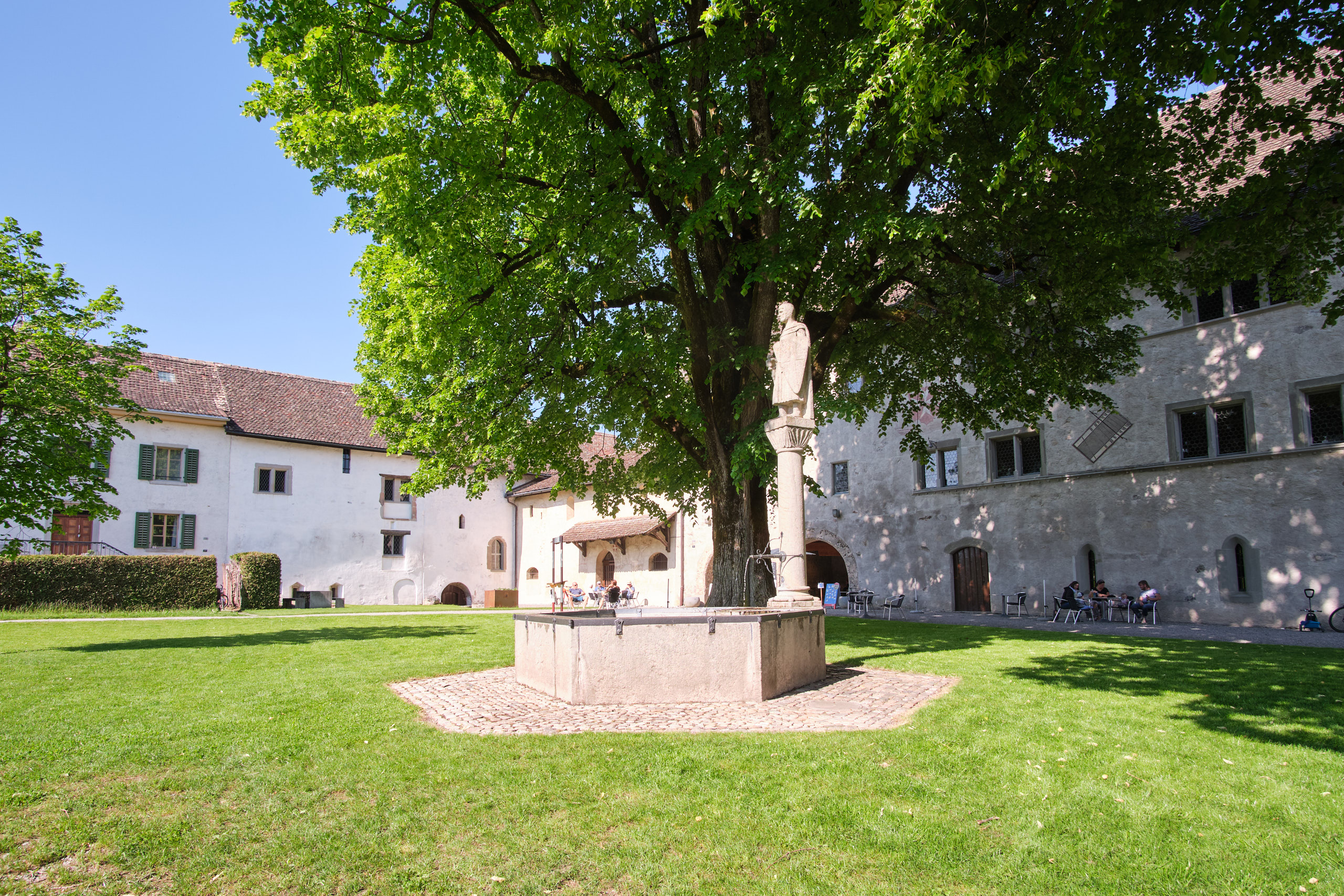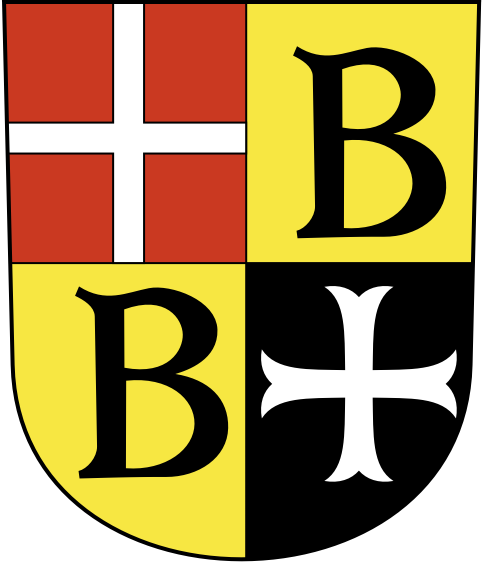History and building
Numerous historical events have shaped the Ritterhaus Bubikon from its origins as a commandery of the Order of St. John to its current use as a museum. The building complex has been a federally listed building since 1959.

Numerous historical events have shaped the Ritterhaus Bubikon from its origins as a commandery of the Order of St. John to its current use as a museum. The building complex has been a federally listed building since 1959.


The Ritterhaus in its present form is the result of many years of construction and renovation. Originally used as a residence of the Order of St John – as a so-called commandery – the building changed under the influence of time.
The origins of the Order of St. John and the Order of Malta date back to the 11th century. When the first crusaders reached Jerusalem in 1099, the Hospitallers, a brotherhood dedicated to St John the Baptist, were working there. They took in sick and needy pilgrims, but also cared for the local Christian, Jewish and Muslim population. In 1113, the Hospitallers were recognised as an order by Pope Paschalis II and increasingly took on military tasks too. During the Reformation, the Order divided into the Roman Catholic Order of Malta and the Protestant or Reformed Order of St John.
With the loss of the Malta in 1798, the military role of the Order came to an end. Since then, the two organisations have pursued exclusively humanitarian tasks: They maintain hospitals, carry out ambulance transports and support sick and needy people all over the world. In Switzerland, the orders are represented by the Swiss Commendation of the Order of St John, based in Bern, and by the Helvetic Association of the Sovereign Military Order of Malta, based in Lucerne. Both orders have one representative each on the board of the Ritterhaus Society Bubikon.
The oldest part of the complex is formed by the former “Bruderhaus” (house of brothers) and the chapel. They were built at the end of the 12th century, possibly on the foundations of an already existing older estate of the Toggenburgs. In the 14th century, the Romanesque chapel was extended by a Gothic choir, which was demolished in 1819. The Romanesque mural paintings inside the chapel date mainly from around 1210 and are among the best-preserved examples of this period in German-speaking part of Switzerland. Among other things, they show the foundation of the commandery by the barons of Toggenburg and Rapperswil as well as episodes from the life of St John the Baptist.
The main building and the wing with the Knights’ Hall were largely built between the 13th and 15th centuries. Originally, they served the head of the order and his administrator, and later the governors of Zurich, as living, working and representation rooms. Guests arriving on horseback were received in the open entrance hall below the administrator’s offices. The main house was last renovated in the Renaissance style around 1570.
The dairy house was built around 1480 and rebuilt for dairy farming in 1570. In the 19th and 20th centuries, the servants probably lived here, which is why the part of the building is also called the “Gesindehaus” (servants’ quarters).
The commandery of Bubikon was founded around 1195-1198 as a gift from the counts of Toggenburg. It belonged to the Grand Priory of Germany and occupied a central position among the German-Swiss commanderies of the Order of St John, as the commanderies of Tobel, Leuggern-Klingnau, Wädenswil and Küsnacht were founded from here. Bubikon’s extensive possessions included numerous hereditary feudal estates in the Zurich Oberland, the lower courts in Bubikon, Hinwil, Ringwil, Grüt, Wangen and Brüttisellen, the church estates in Bubikon, Hinwil, Wald, Buchs and Wangen as well as houses in Zurich and Rapperswil.
The Reformation in the city of Zurich put the Catholic Order in a difficult situation. In 1528 the convent was abolished. In 1532 the order was able to take possession of the commandery again, but had to appoint a Zurich citizen as administrator and reformed priests in its churches. The commandery and manor of Bubikon remained in the possession of the Order until they were sold in 1789. After that, parts of the complex were demolished or used as private houses.
In 1936, the Ritterhaus Society took over the buildings and restored the so-called “Ritterhaus Bubikon”. Today, as a museum, it provides an insight into one of the best-preserved commanderies of the Order of St John and the Order of Malta in Europe. The coat of arms of the municipality of Bubikon still consists of the coat of arms of the commandery combined with two different representations of the Order of St. John’s cross.
